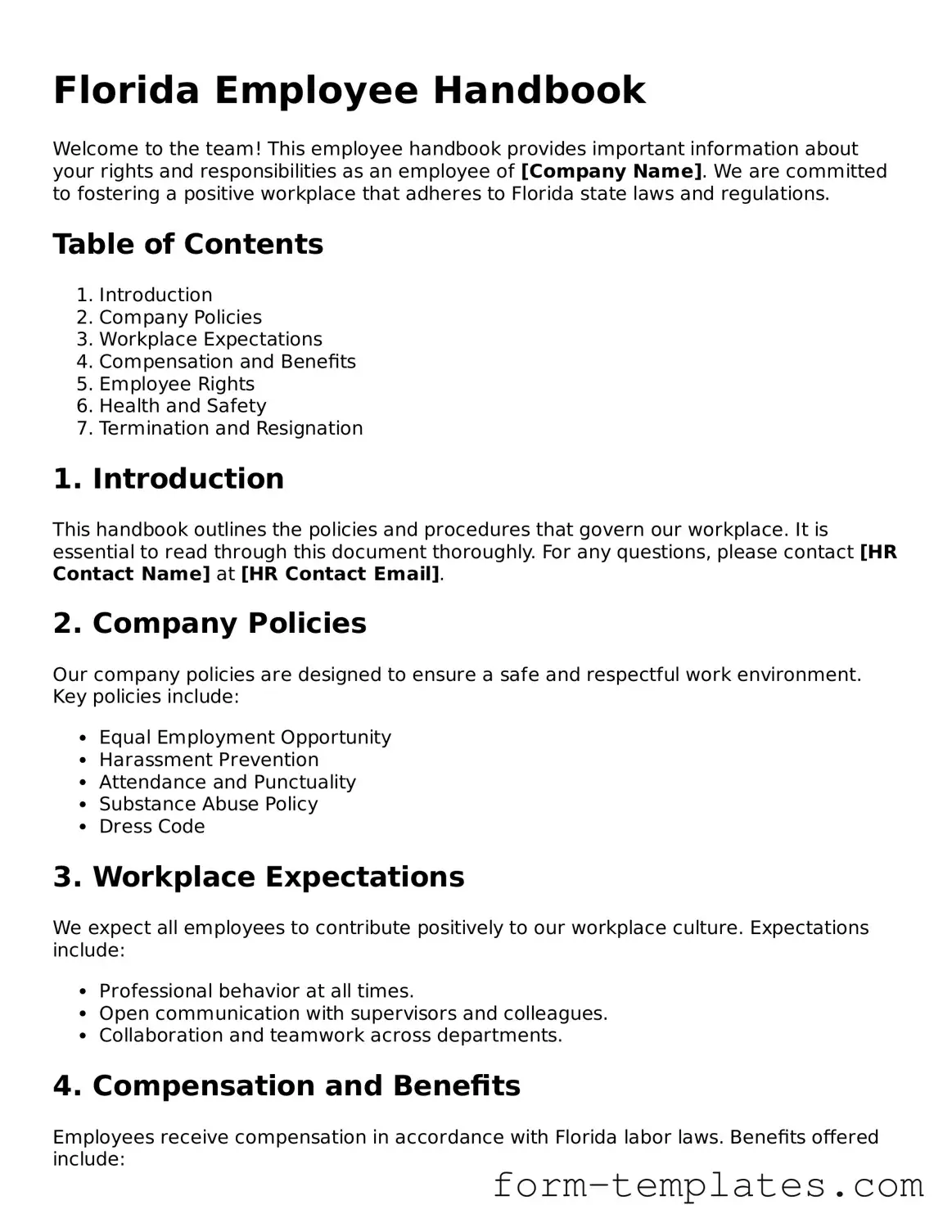Florida Employee Handbook
Welcome to the team! This employee handbook provides important information about your rights and responsibilities as an employee of [Company Name]. We are committed to fostering a positive workplace that adheres to Florida state laws and regulations.
Table of Contents
- Introduction
- Company Policies
- Workplace Expectations
- Compensation and Benefits
- Employee Rights
- Health and Safety
- Termination and Resignation
1. Introduction
This handbook outlines the policies and procedures that govern our workplace. It is essential to read through this document thoroughly. For any questions, please contact [HR Contact Name] at [HR Contact Email].
2. Company Policies
Our company policies are designed to ensure a safe and respectful work environment. Key policies include:
- Equal Employment Opportunity
- Harassment Prevention
- Attendance and Punctuality
- Substance Abuse Policy
- Dress Code
3. Workplace Expectations
We expect all employees to contribute positively to our workplace culture. Expectations include:
- Professional behavior at all times.
- Open communication with supervisors and colleagues.
- Collaboration and teamwork across departments.
4. Compensation and Benefits
Employees receive compensation in accordance with Florida labor laws. Benefits offered include:
- Health Insurance
- Paid Time Off
- Retirement Savings Plan
- Employee Assistance Programs
5. Employee Rights
As an employee in Florida, you are entitled to certain rights, such as:
- Receiving fair wages and overtime pay.
- Protection against discrimination.
- Safe working conditions.
6. Health and Safety
Your safety at work is our priority. Please adhere to all health and safety guidelines. Report any hazardous conditions to [Safety Officer Name] immediately.
7. Termination and Resignation
If you choose to resign or if your employment is terminated, please follow these guidelines:
- Provide at least [X Days] notice for resignations.
- Complete an exit interview.
- Return all company property before your last working day.
Thank you for being a valuable part of [Company Name]. We are excited about what we can achieve together!
